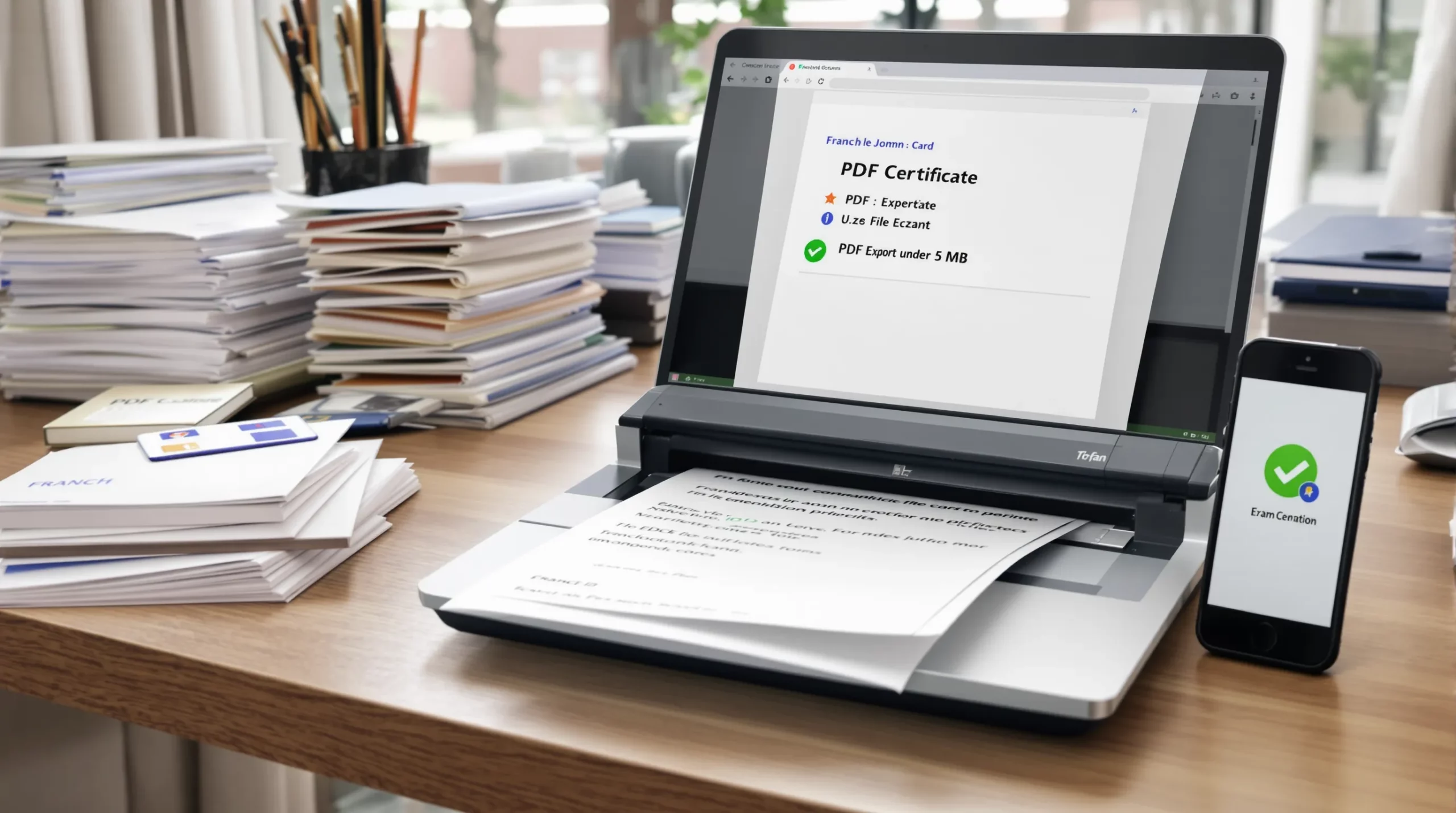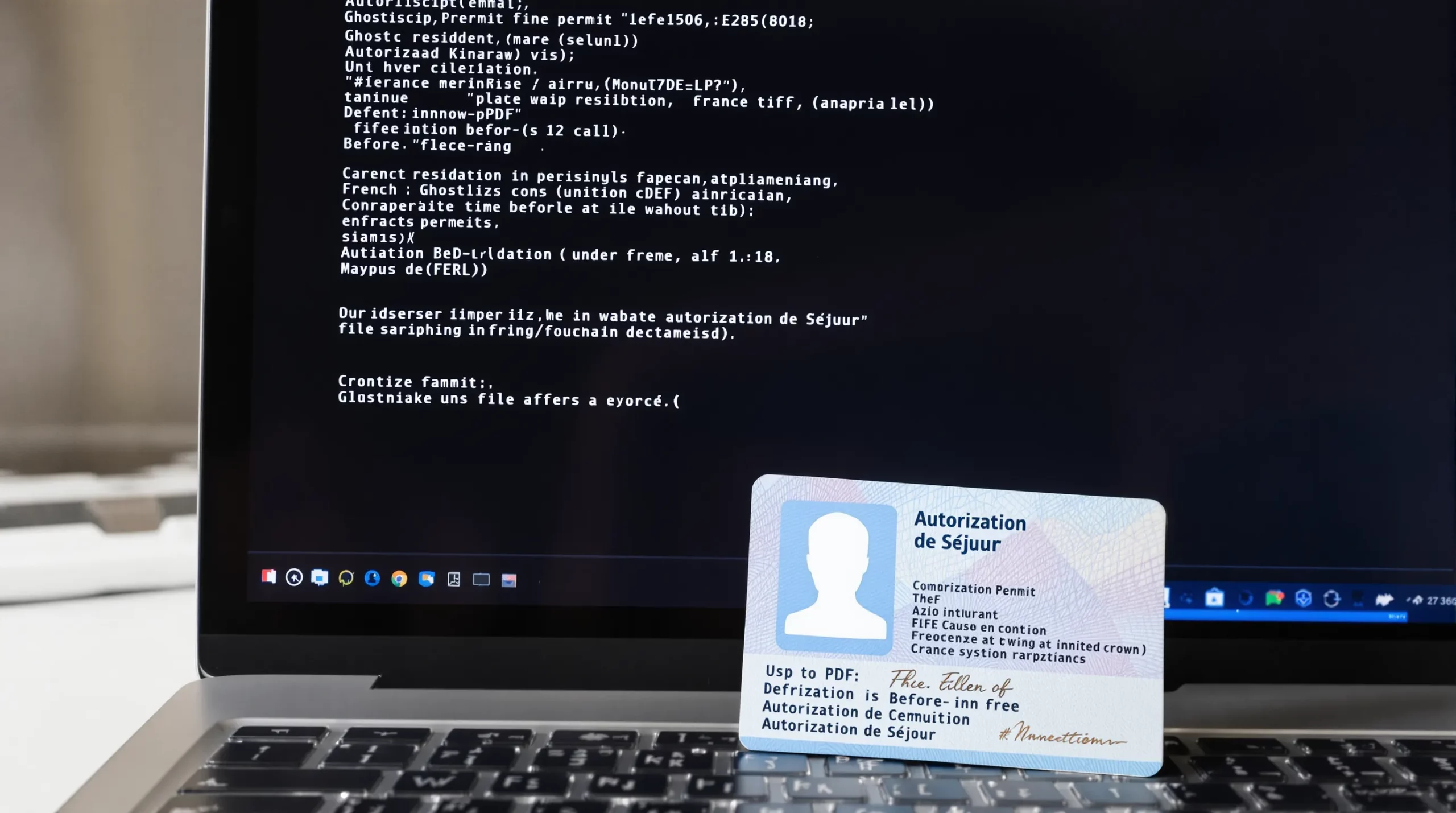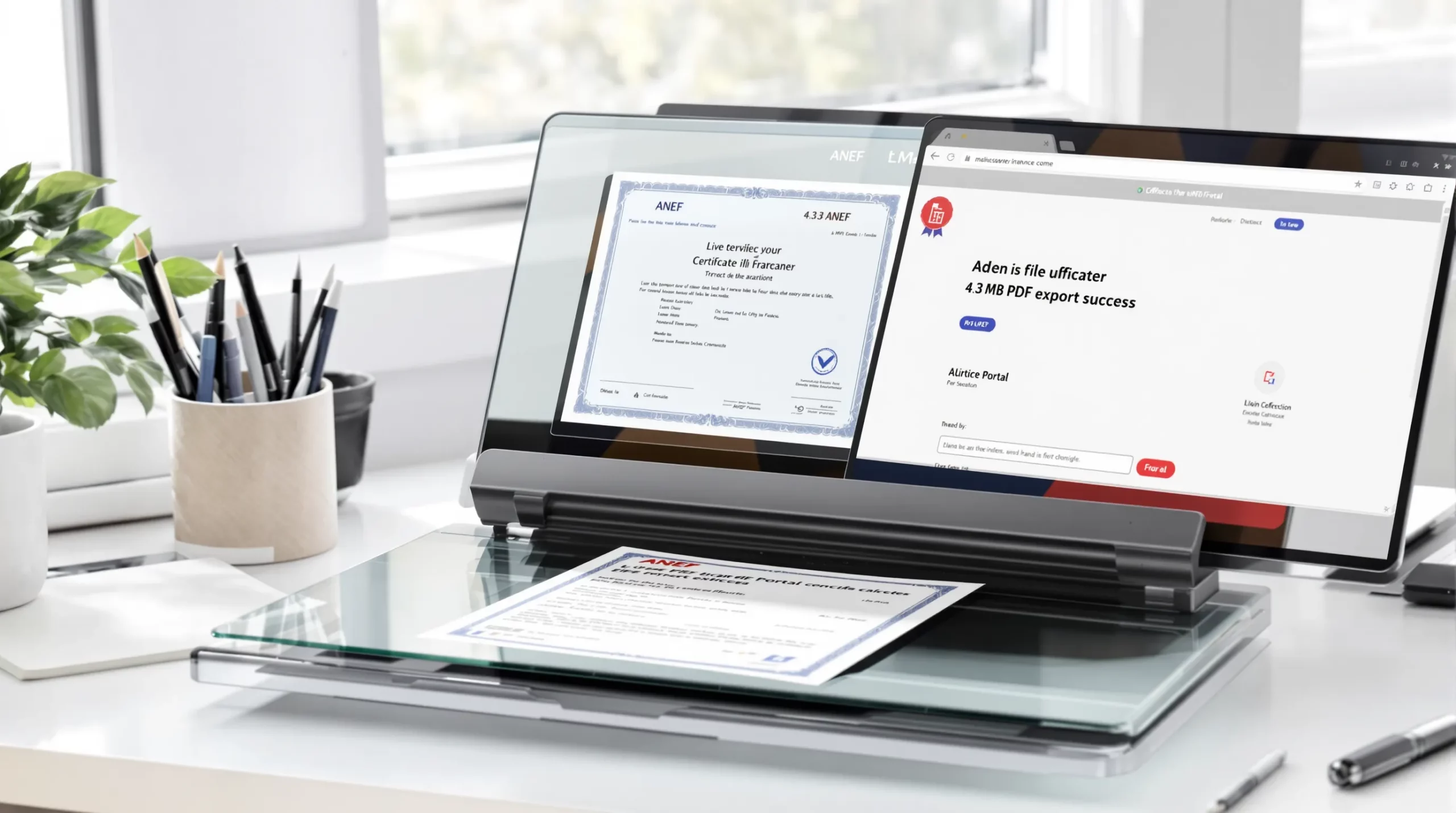Prefecture Paper Scanning Hacks: Getting Perfect PDFs Under 5 MB

Submitting immigration documents on the ANEF portal or by email to your préfecture almost always comes with the same dreaded error message: “Votre fichier dépasse la taille maximale autorisée (5 Mo).” When you are scanning 20-page payslip bundles, long -form birth certificates or colour passports, keeping each PDF under the limit can feel impossible. The good news? With a few smart scanning hacks you can produce crystal-clear, perfectly legible PDFs that meet French prefecture standards and stay below 5 MB—without expensive software or hardware.
All of the techniques below have been field-tested on hundreds of ImmiFrance client files in 2025 and comply with ANEF and email-submission guidelines issued by the Ministry of the Interior.
1. Understand the Prefecture’s File-Size Rules in 2025
Before tweaking your scanner settings, confirm the exact limits you need to respect. They vary slightly depending on how you submit:
| Submission Channel | Max Size per File | Accepted Formats | Typical Scenarios |
|---|---|---|---|
| ANEF online portal | 5 MB | PDF, JPEG, PNG | Residence-permit renewal, change of status, work permits |
| France-Visas portal | 3–4 MB | PDF, JPEG | Consular visa applications |
| Email to préfecture | 8–10 MB (varies) | Strike-day back-ups, OQTF appeals | |
| Démarches-simplifiées | 4 MB | PDF, JPEG | Naturalisation, exchange of driver’s licence |
Missing the mark even once can lead to silent rejection or a frozen application, so aim comfortably under 5 MB for every file.
2. Choose the Right Scanning Device
- Dedicated flatbed or multi-function printer (MFP): Ideal for multi-page bundles and double-sided ID cards.
- Smartphone scanning app: Perfect when you lack a home scanner. Look for automatic edge detection and cloud export.
Recommended free apps that respect privacy (no document storage on foreign servers):
- Adobe Scan (select “Save locally”)
- Microsoft Lens (set export as PDF)
- Open-source alternative: OpenScan (Android F-Droid)
3. Optimise Your Scanner Settings
The single biggest driver of file weight is DPI (dots per inch). Use the lowest resolution that keeps text sharp:
| Document Type | Recommended DPI | Colour Mode | Why |
|---|---|---|---|
| Colour passport page | 200 dpi | Colour (24-bit) | Preserves security features |
| Black-and-white letter (payslip, tax notice) | 150 dpi | Greyscale | Legible stamps & logos |
| Old low-contrast document (faded civil registry) | 300 dpi | Greyscale | Boosts readability without explosion |
Other parameters:
- Compression algorithm: choose JPEG or JBIG2 for greyscale; avoid uncompressed TIFF inside PDF containers.
- Brightness/contrast: Slightly increase contrast (+10 %) to reduce background “noise” that adds weight.
- Paper size: Select A4 or auto-crop so you don’t embed large white margins.
4. Scan Multi-Page Files Like a Pro
- Automatic feeder first, manual clean-up later. If your MFP has an ADF tray, run the whole stack at 150 dpi greyscale. Missing or crooked pages can be re-scanned individually and inserted.
- One logical document = one PDF. FranceConnect portals ask for separate uploads (passport, proof of address, etc.). Don’t bundle different document types in a single file.
- Respect page order. French officials love chronology—put the most recent payslip first unless the CERFA explicitly says otherwise.
5. Shrink Existing PDFs – Zero Loss in Quality
Already stuck with gigantic files? Use these free, privacy-respecting options that process locally on your computer.
| Tool | Platform | Steps | Average Reduction |
|---|---|---|---|
| FreePDF (Windows) | Desktop | Print ➝ FreePDF ➝ Medium profile | 40–70 % |
| Preview (macOS) | File > Export as PDF > Quartz Filter > Reduce file size | 50–80 % | |
| Ghostscript CLI (Linux/Win/macOS) | gs -sDEVICE=pdfwrite -dPDFSETTINGS=/ebook -o output.pdf input.pdf |
60–85 % | |
| qpdf + gzip (cross-platform) | qpdf --linearize in.pdf out.pdf then gzip -9 |
20–40 % |
Avoid most online “compress-my-PDF” websites—they often store copies on overseas servers, breaching GDPR and ANEF’s secrecy rules.

6. Combine or Split Pages Without Killing the Size
- PDFsam Basic (open-source, no upload): Merge or split without re-compression.
- Sejda Desktop: Free for files <50 MB, processes locally if you uncheck “Upload to Sejda.”
Pro tip
For large bundles such as 30-page avis d’imposition, split by year (2023, 2024) and label files accordingly—avis_imposition_2024_nom.pdf—to stay within limits and help the officer read faster.
7. Correct Orientation and Legibility in Two Clicks
Nothing irritates a préfecture clerk more than upside-down pages. Use quick-rotation shortcuts:
- Adobe Acrobat Reader > Organise pages > Rotate left/right
- Linux:
pdfjam --landscape --outfile corrected.pdf input.pdf
Add bookmarks for long documents so the reviewer jumps straight to key pages (e.g., stamp page of your passport).
8. Tackle “Scanned Copy Too Dark / Too Light” Rejections
The most common ANEF reject code in 2025 is photo illisible. Solve it:
- Re-scan using greyscale instead of black-and-white—this keeps background stamps visible.
- Use the Levels tool in GIMP (desktop) or Snapseed (mobile) to brighten dark areas without spiking file size.
- Slant correction: deskew in ScanTailor Advanced before exporting.
9. Secure Your PDFs Before Upload
French immigration law (Article R.311-3 CESEDA) forbids encrypting supporting files, but you should:
- Strip hidden metadata (creator, GPS) with
exiftool -all= file.pdf. - Add an unobtrusive watermark such as “Dossier Préfecture – Nom 2025” in the footer; this helps if pages are misplaced internally.
For deeper security advice, read our guide “Data Privacy on the ANEF Portal” and follow its best practices.
10. File-Name Conventions That Speed Up Processing
Stick to lowercase, no accents, underscores instead of spaces, and keep it short:
passport_nom_prenom_2025.pdf
Avoid French punctuation like é, ç, à—some legacy prefecture systems still choke on UTF-8.
11. Last-Minute Troubleshooting Checklist
- File size < 4.8 MB (leave margin for ANEF variation)
- All pages upright and in order
- Text readable at 100 % zoom on a laptop screen
- No colour photos of people other than yourself (GDPR)
- File name follows
documenttype_name_date.pdf

How ImmiFrance Can Help
Even the best scanning hacks can’t rescue a weak dossier. Our advisers review every page, flag opacity or resolution issues before the prefecture sees them, and—when necessary—connect you with a lawyer from our network to contest illegible-file rejections. Book a 30-minute Document Health Check and receive:
- Personalised scan-setting template for your device
- Automated size-check report on 20+ PDFs
- Priority re-upload assistance if ANEF fails
👉 Schedule your session at https://immifrance.com/document-check
FAQ
What if my passport scan is still over 5 MB at 200 dpi colour? Reduce to 150 dpi and crop only the identity page plus the signature; other pages are rarely required unless visas are requested.
Is it safe to use free online PDF compressors? Generally no. Many store copies on servers outside the EU, violating GDPR and risking data leaks. Use local tools listed above.
Can I submit JPEGs instead of PDFs? ANEF accepts JPEG, but some prefectures merge your files internally. Multi-page PDFs are cleaner and less likely to be corrupted during merging.
Will black-and-white scans be rejected? Only if coloured security features or stamps become illegible. For text-only letters, greyscale at 150 dpi is perfectly fine.
Ready to stop fighting file-size errors and focus on winning your case? Book ImmiFrance’s Document Health Check today and upload with confidence.
